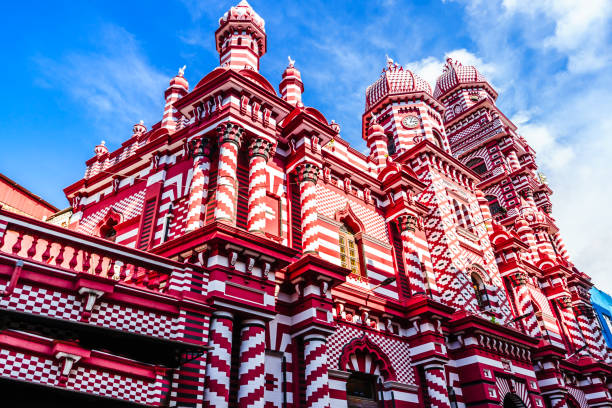

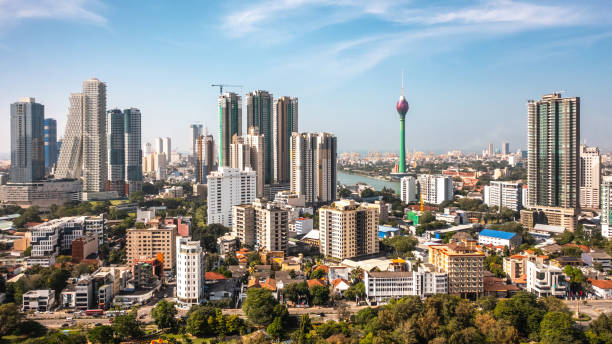
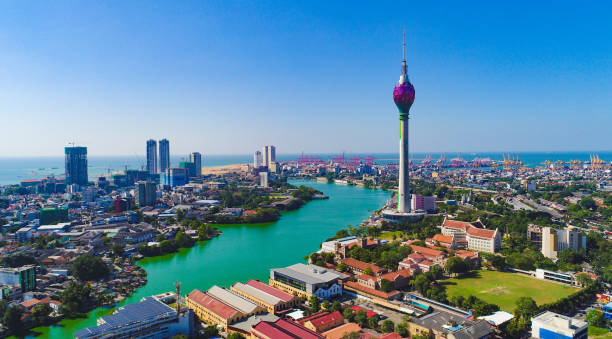
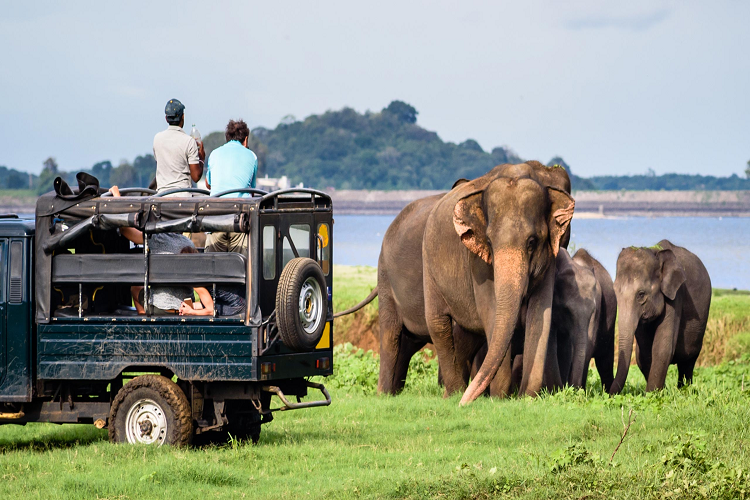
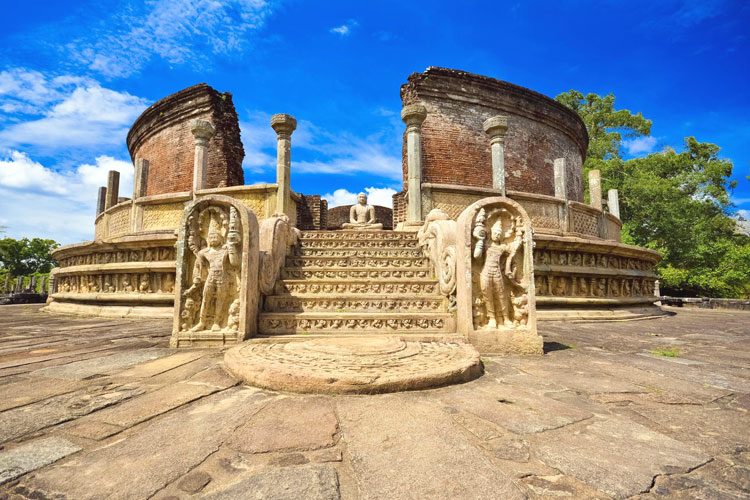
Upon arrival at the Colombo Bandaranaike International Airport, you will be received
warmly by our representative. You will then be escorted to your vehicle to begin your
holiday in Sri Lanka.
Your first destination will be Negombo.
Check in to the Hotel in Negombo.
Overnight Stay at Hotel in Negombo.
Breakfast at the hotel
Anuradhapura (UNESCO World Heritage Site) – The city of Anuradhapura was the
first ancient capital of Sri Lanka, and it is still a sacred Buddhist religious center. It
lies around 200 kilometers (124 miles) north of Colombo, the current capital.
Buddhist worshippers and pilgrims visit the well-preserved ruins of the temples and
religious centers along the bank of the river Malwathu Oya year-round. The city is
also home to one of the largest and most sacred Bodhi trees in Sri Lanka, believed
to be a descendant of the Bodhi tree where Buddha was illuminated. Anuradhapura
became a UNESCO World Heritage Site in 1982. Historians believe that from around
4 th century BC to the 11 th century AD, Anuradhapura was the capital Sinhalese and a
thriving economic hub in South Asia. Although Anuradhapura’s history is easily
traced from the 4 th century BC, excavations have been able to identify artefacts from
the Iron Age which easily dates back to 900 BC. It is believed that from those times
the community grew and flourished to become one of South Asia’s grandest
kingdoms.
Jaya Sri Maha Bodhi – This tree was grown from a sapling of the original sacred fig
tree under which the Buddha had attained enlightenment more than 2500 years
ago. Rathnaprasada, Lovamahapaya (Brazen Palace) are monastic buildings in
Anuradhapura. Thuparama Temple, Samadhi Buddha Statue, Miriswatiya
Dagoba and Isurumuniya Viharaya are few of the attractions in Anuradhapura that
will attract Travellers who love history.
Ruwanweliseya – The Ruwanweliseya is a massive and sacred Buddhist stupa
(dagoba) located in Anuradhapura, Sri Lanka. It is one of the most venerated
monuments in the country and an iconic symbol of Sinhalese Buddhist heritage.
The stupa was built by King Dutugemunu around 140 BCE, after he unified Sri Lanka
under his rule. It was constructed to enshrine sacred relics of the Buddha, including
what is believed to be his collarbone and a begging bowl.
Abhayagiri Vihara – Abhayagiri is the largest monastery complex in the
Anuradhapura kingdom. King Vattagamini Abhaya founded this monastery in the 2nd
century BC in celebration after his thrilling defeat of the Indian Tamil Cholas. This
monastery consists of a huge stupa, a large Buddha statue, a huge pond cut out of
stone known as the Elephant Pond and further to the east, the Twin Baths, where
monks would cleanse themselves for rituals.
Isurumuniya Vihara – A picturesque view of a temple slightly built into a cave with a
cliff above is of the Isurumuniya Viharaya. It is located close to the Tissa Wewa
reservoir, constructed by King Devanampiya Tissa and the Royal Pleasure Gardens.
The temple is a treasure trove holding exquisite carvings which are the finest in Sri
Lanka.
Overnight stay at Hotel in Anuradhapura.
Breakfast at the hotel
Sigiriya Rock Fortress – One of the most extraordinary historical and
archaeological sites of Sri Lanka and the world. Apart from the fortress complex
having remnants of a ruined palace and an extensive network of fortifications, there
are Royal Gardens with ponds and fountains. Upon ascension of the Lion Gate and
Staircase to the summit, you will come across the Mirror Wall and the famous
exquisite multicoloured rock paintings depicting divine and angelic goddesses –
Frescoes which have brought universal renown to Sigiriya.
Dambulla Golden/Cave Temple – The Golden Dambulla Cave Temple has been a
pilgrimage destination for the past 22 centuries. It’s also the largest and best-
preserved cave temple on the island (there are others). The Dambulla Cave Temple
was named a UNESCO World Heritage Site in 1991 in order to preserve the
magnificent wall paintings and over 150 statues in and around the temple.
Village Tour – Hiriwadunna is a quaint rural village in the centre of Habarana. The
village tour is an interesting experience in learning the village life of the country
which is laid back unlike the hustle bustle of city life. Encounter a bullock cart ride for
a traditional experience. (If time Permits)
Proceed to Kandy.
Overnight stay at Hotel in Kandy.
Breakfast at the hotel
Spice Gardens – Visit a spice garden to discover the different types of herbs and
spices of Sri Lanka’s pride, its uses and benefits. Learn how the spices are produced
from its growing methods to its harvest. Try out amazing meals prepared with the
spices that you would love to taste. Opportunities for purchase on various products
made with the spices are available which can be either natural cosmetics or
traditional herbal remedies.
The Temple Of The Tooth – Kandy’s pride and prestige, the Temple of the Tooth –
Sri Dalada Maligawa is the city’s most sacred and vital attraction. Its significance
reflects to the legacy of the tooth relic of Lord Buddha being encased in a golden
chest.
Royal Botanical Gardens – The Royal Botanical Garden has a renowned history as
the beginning of this garden dates back to 1371 during the time of the ruling
Sinhalese Royals. It is famous for its rich diversity of orchids for it is home to more
than 4000 species of plants which are orchid species, medicinal plants and palm
trees.
Bahirawakanda Vihara Buddha Statue – Sitting majestically 88 feet high on top of
a hill, crowning Kandy is a white colossal statue of Buddha named as
Bahirawakanda Vihara. Climbing the numerous steps to the top gives one a sense of
peace, serenity and harmony; and a stunning and gorgeous panoramic view of
charming Kandy.
Kandy Lake – A centrepiece of Kandy, a place where time stands still and was
originally called Kiri Muhuda or Milky Sea, the lake was built in 1807 by the last king
of Sri Lanka and Kandy, King Sri Wickrama Rajasingha, an artificial construction
epitomising a part which represents the final Sri Lankan kingdom.
Gem Gallery – Sri Lanka, famed to being the isle of Gems has many gems and
jewellery available in retail shops in Kandy. Visit the gem shops and be amazed by
the collection of beautiful gemstones that have been cut and polished from the rough
stones to the beautiful eyes that would glisten from a distance, especially the royal
blue sapphire that made Sri Lanka proud when a gemstone was gifted to the Queen
of England in 1981 and when Prince Charles had made it into an engagement ring
proposing to Lady Diana Spencer.
Kandyan Dancing And Cultural Shows – Kandyan dancing plays an important role
in the culture of Sri Lanka and is one of the most revered features of the Perahera
and has gained recognition as the National Dance of Sri Lanka. Watch the Kandy
Cultural show and get captivated through connecting your imaginative mind to their
tribal roots and feel its pulse and rhythm. Pls visit the gem gallery to get a free pass
for Cultural Dance show.
Silk & Batik Factory – In Sri Lanka, batik is a reasonably large industry, with
factories or small workshops, which produce large quantities of batik clothes,
decorative homewares and pictures. Modern chemical dyes expand the range of
colours available. It is still very much a handmade technique, where Sri Lankan
ladies spend hours applying hot wax to pieces of cotton or silk cloth.
And then check in to the Hotel in Kandy.
Overnight Stay at Hotel in Kandy.
Breakfast at the hotel
Ramboda Falls – Located next to the road between Kandy and Nuwara Eliya,
Ramboda Falls is one of the highest waterfalls in Sri Lanka, standing at over one
hundred meters tall, and is undoubtedly one of Sri Lanka’s most picturesque. It is
most definitely worth a stop off during your tour of the area given the stunning
surroundings and countless photo opportunities that arise.
Tea Plantations & Tea Factory – Tea was first planted in Sri Lanka in 1824 at the
Peradeniya Botanical Gardens, when some plants were brought from China. Others
were introduced from Assam in 1839. In 1867, a Scottish planter named James
Taylor planted tea seedlings in 8 hectares of woodland on the Loolkondura estate. In
1873, Sri Lanka's tea export industry started with a modest 23 pounds. be shipped to
London. The tea will only grow on undulating ground and is classified based on
elevation into 3 main groups. Today more than 200,000 hectares in the highlands
and other areas are planted with tea and around 300 million kilograms, with 25% of
the world's tea exports, Sri Lanka is the largest tea exporter in the world
Sri Bhakta Hanuman Temple – is one of the important Hanuman Temples in Sri
Lanka located on summit of the very beautiful picturesque mountain in Ramboda 30
KM north to Nuwara Eliya, the gateway to the tea country hill station of Sri Lanka.
This Hanuman Temple in Ramboda was constructed by Chinmaya Mission of Sri
Lanka. Shri Bhakta Hanuman temple is dedicated to the God Hanuman and this is
one of important sites of Ramayana Tour in Sri Lanka. Visitors can witness the 18
feet Hanuman statue which is the tallest Hanuman statue in Sri Lanka established
inside the Shri Bhakta Hanuman Temple in Ramboda.
Nuwara Eliya – meaning "city of light", it is a city in the central highlands of Sri Lanka
with a picturesque landscape and a temperate climate. It is located at an elevation of
1,868 m (6,128 ft) and is considered the most important place for tea production in
Sri Lanka. The city is dominated by Pidurutalagala, the highest mountain in Sri
Lanka. It is the heart of Sri Lankan tea country interspersed with gushing streams
and thundering waterfalls. The city with the highest altitude in the beautiful tropical
island. And true to expectations, it finds breathtaking views of valleys, meadows,
mountains and vegetation in a healthy climate. It's hard to imagine Nuwara Eliya
being only 180km from hot and humid Colombo. City attractions include the golf
course, trout streams, Victoria Park, and boating or fishing on Lake Gregory. Victoria
Park is an attractive and well-used oasis. There are many famous waterfalls around
the city.
Lake Gregory – Lake Gregory was created in the heart of the town by British
governor Sir William Gregory in 1873 making it one of the many historical locations
in Nuwara Eliya.
Victoria Park – The Victoria Park is a public park and prominent tourist area. It was
named after Queen Victoria to commemorate her 60th Jubilee Coronation in 1897. It
is a great place to exhilarate in the stunning views of the surrounding hills.
Haggala Garden (Ashoka Vatika) – is the place where Sita Devi was in captivity
under Sri Lankan king Ravana during Ramayana yatra in Sri Lanka. There is no
clear demarcation of the exact land of Ashok Vatika in Nuwara Eliya but it is believed
the area is to be in Sita Eliya and part of the Hakgala botanic gardens. Basically,
area is surrounds Sita Amman Temple / Hakgala Botanic Gardens / Nearby stream
and close areas. As per the Ramayana Story Sri Lanka, the beautiful princess Sita
Devi was brought to the island of Lanka Puram (Sri Lanka) and imprisoned in an
area named Ashok Vatika. She was preferred to stay in this garden instead of at
Ravana’s majestic castle. There was a wonderful Ashoka tree here, which provided
the distressed Sita, shelter and comfort. It is believed that the considerable area of
Ashok Vatika were burnt and destroyed by monkey god Hanuman when he arrived in
the island and found the lost princess Sita Devi. Sita Devi was in Ashok Vatika until
end of the battle between Ravana & Rama which resulted the death of Ravana, the
Sri Lankan King.
Seetha Amman Temple – is the only Hindu Temple which dedicated to Princess
Sita in Sri Lanka. This is one of the important Ramayana related places of Sri Lanka.
With reference to the Ramayana proof of Sri Lanka it is believed that the Sita devi
was kept captive at this site by King Ravana. There is a stream by the side of the
temple where that runs from the hill, catered to the needs of Sita Devi during her stay
at Ashok Vatika. She is also said to have bathed in this stream. Now there is temple
for Lord Rama, Sitadevi, Luxshmana, and Hanuman by the side of this stream. It is
interesting to note that foot prints akin to Lord Hanuman’s are found by this river and
some are of small size while some are of large size.
And then check in to the Hotel in Nuwara Eliya.
Overnight Stay at Hotel in Nuwara Eliya.
Breakfast at the hotel
Pinnawela Elephant Orphanage – Pinnawela Elephant Orphanage is a home for
many elephant orphans that have been either lost from their mother or have been
separated from the herd or found crippled in the wild. An interesting place seeing
large groups of elephants in a natural habitat is what makes Pinnawela extra special
and popular among tourists.
And then check in to the Hotel in Bentota.
Overnight Stay at Hotel in Bentota.
Breakfast at the hotel
Madu River Boat Ride – in the 915-hectare Maadu Ganga Estuary is connected by
two narrow channels to the Randombe Lake, forming a complex wetland system
encompassing 64 mangrove islets. In the year 2000, International Union for the
Conservation of Nature (IUCN) undertook a detailed biodiversity survey of the region
& revealed the existence of no less than 10 major wetland vegetation types
supporting over 300 plant species & 248 species of vertebrates.
Kosgoda Marine Turtle – Globally, all seven species of marine turtles are
endangered. Of these seven, five come ashore to nest in Sri Lanka. The process of
marine turtles nesting, hatchlings being born, and swimming back to sea is
fascinating to observe.
Water Sports – The water sports in Bentota are world-renowned, and there is
something for people of all ages. Water sports in Bentota include Jet Ski, Banana
Boat Ride & Tub
Proceed to Colombo
Colombo City Tour – Tour will begin from the Fort area of Colombo which has been
named fort because of it being a fort during the times of Portuguese and Dutch. Later
we will take you to Colombo National Museum to see some of the great specimens
of arts crafts and archeology of Colombo. You will drive thru the commercial areas
and drive past Pettah, a colorful Oriental bazaar with a mix of people, ancient
vehicles, bargains, mosques and temples. You have a chance to see a Hindu
Temple, Buddhist Temple and the Jami Ul Alfar Jumma Mosque of Colombo.
Continue your tour of Colombo through the Wolfendhal Dutch Church, Hulfts dorp
Law Courts as you drive along the residential area of Cinnamon Gardens, and also
visit the Independence Square and Bandaranayake Memorial International
Conference Hall.
Pettah Bazaar – is a famous shopping area found in Colombo. It is situated just
outside of Colombo Fort. Buyers can find a variety of items for cheap prices and
bargains at the Pettah Bazaar. It is a very busy area of the city and many street
vendors and shops sell everything from clothes to electronic items, toys, fruits,
jewelry household items and many more.
Jami Ul Alfar Jumma Mosque – Located in one of the bustling streets of Pettah,
the Jami Ul-Alfar Mosque also known as the red mosque is one of the oldest
mosques in Sri Lanka. This mosque was built in 1908 to provide a place of worship
to the Muslims. The construction and design of this mosque was done by an
unqualified architect known as Habibu Labbe Saibu Labbe. Women’s can enter the
mosque and have a look around as tourists. However, if they seek to enter the
mosque they must ensure cover their hair, arms and legs.
The Town Hall – of Colombo is the headquarters of the Colombo Municipal Council
and the office of the Mayor of Colombo. Built in front of the Viharamahadevi Park,
Colombo, Sri Lanka, it is the meeting place for the elected municipal council.
Colombo National Museum – Built in monumental Italian architectural style in 1877
and founded by Sir William Henry Gregory, the British Governor of Ceylon, the
Colombo National Museum was initiated with just 800 exhibits but today the majestic
museum proudly hosts over 100,000 exhibits and is the most important library of the
county. The building comprises of two floors with numerous viewing galleries and a
multitude of artifacts, sculptures and armaments giving an insight into the glorious
history of Sri Lanka.
The Independence Square – is one the best places to relax in Colombo. It is
located in the affluent Cinnamon Gardens district in Colombo. It serves as a
monument, a park and a walking area as well. There is a memorial hall, the
memorial museum, a vast green lawn and the Arcade. The Independence Memorial
Hall was constructed in the year 1948 in order to commemorate our independence
from the British rule. The Memorial Hall is an open sided hall with beautifully carved
cement columns and a shapely tiled roof. Statues of seated lions surround this hall
which is used for ceremonial functions.
Galle Face Green – is a favorite place for families, children, lovers and picnickers.
While the hot sun makes carrying around an umbrella a must and the crows are a
nuisance, it is still a beautiful place to relax, enjoy the beach and have meals. There
is enough space to walk around, sit and even fly kites. During the kite season, the
skies over Galle Face Green are hidden behind the colorful kites that bring joy to the
young and old. Those who enjoy people watching will be able to do a lot of observing
at Galle Face Green, as it attracts people of various cultures, ethnicities and ages.
Gangaramaya Temple – Started by the renowned scholar monk Hikkaduwe Sri
Sumangala in the late 19th century, Gangaramaya is one of the oldest temples in
Colombo. Gangaramaya is not merely just a temple; it is a place of learning and a
cultural center. There happens to be a museum at this temple and it holds a
collection of artifacts and various other objects of cultural, historical and religious
value.
Seema Malaka Meditation Center is run by the Gangaramaya Temple and was
designed by the renowned Sri Lankan architect Geoffrey Bawa, after the original
structure sank completely under water.
The Colombo Lotus Tower – is 350 meters (1150 feet) dominates the skyline of
Colombo. Construction of the Lotus Tower commenced in 2012. It is the ‘tallest self-
supported structure in South Asia’. It will also become the world’s 19th tallest tower
and will be 24 meters taller than the Eiffel Tower in Paris. This tower will be used for
communications, leisure and observation purposes. As the name suggests, the
design of this tower and structure is influenced by the lotus flower, which symbolizes
purity in the Sri Lankan culture. The construction of the Colombo Lotus Tower is
funded by Chinese EXIM bank.
And then check in to the Hotel in Colombo.
Enjoy the Nightlife in Colombo by your own
Breakfast at the hotel
Proceed to Airport for the Departure Flight